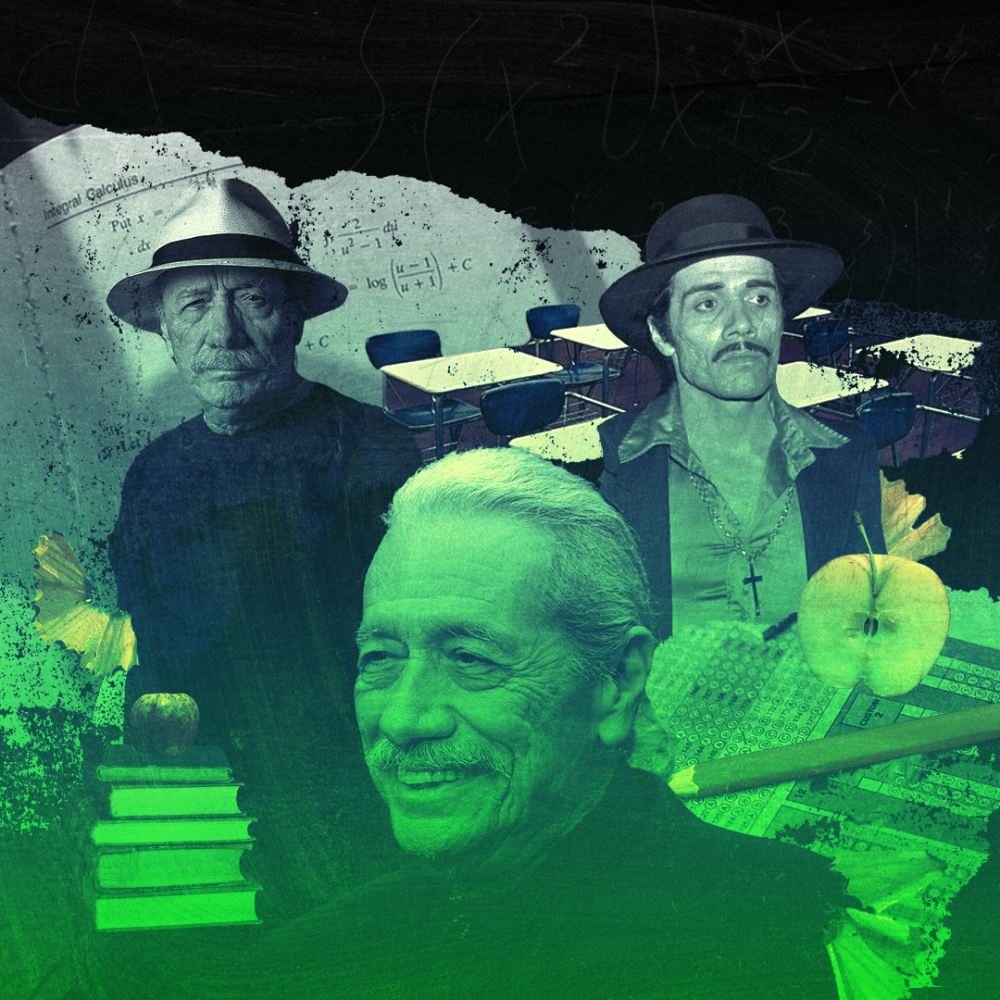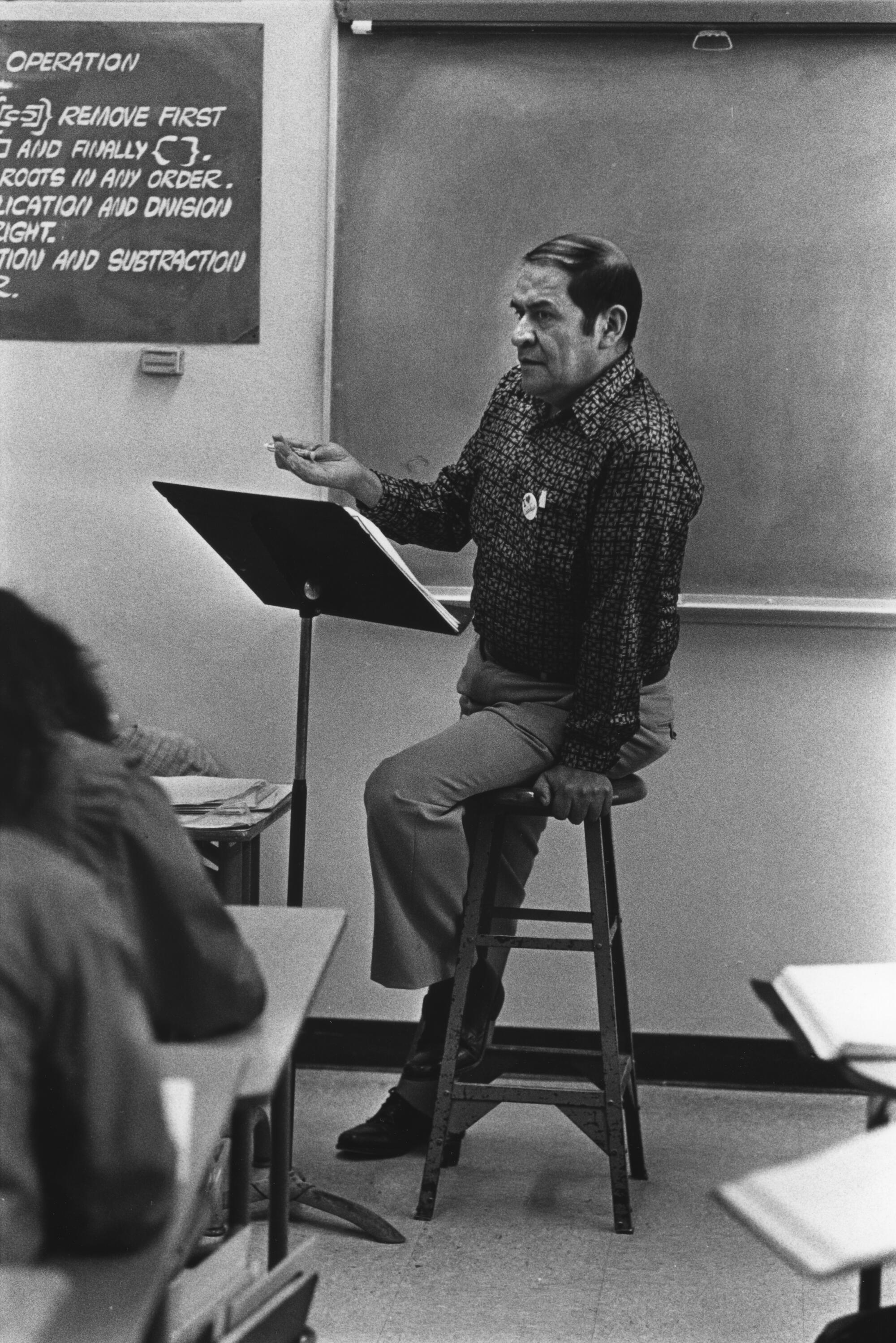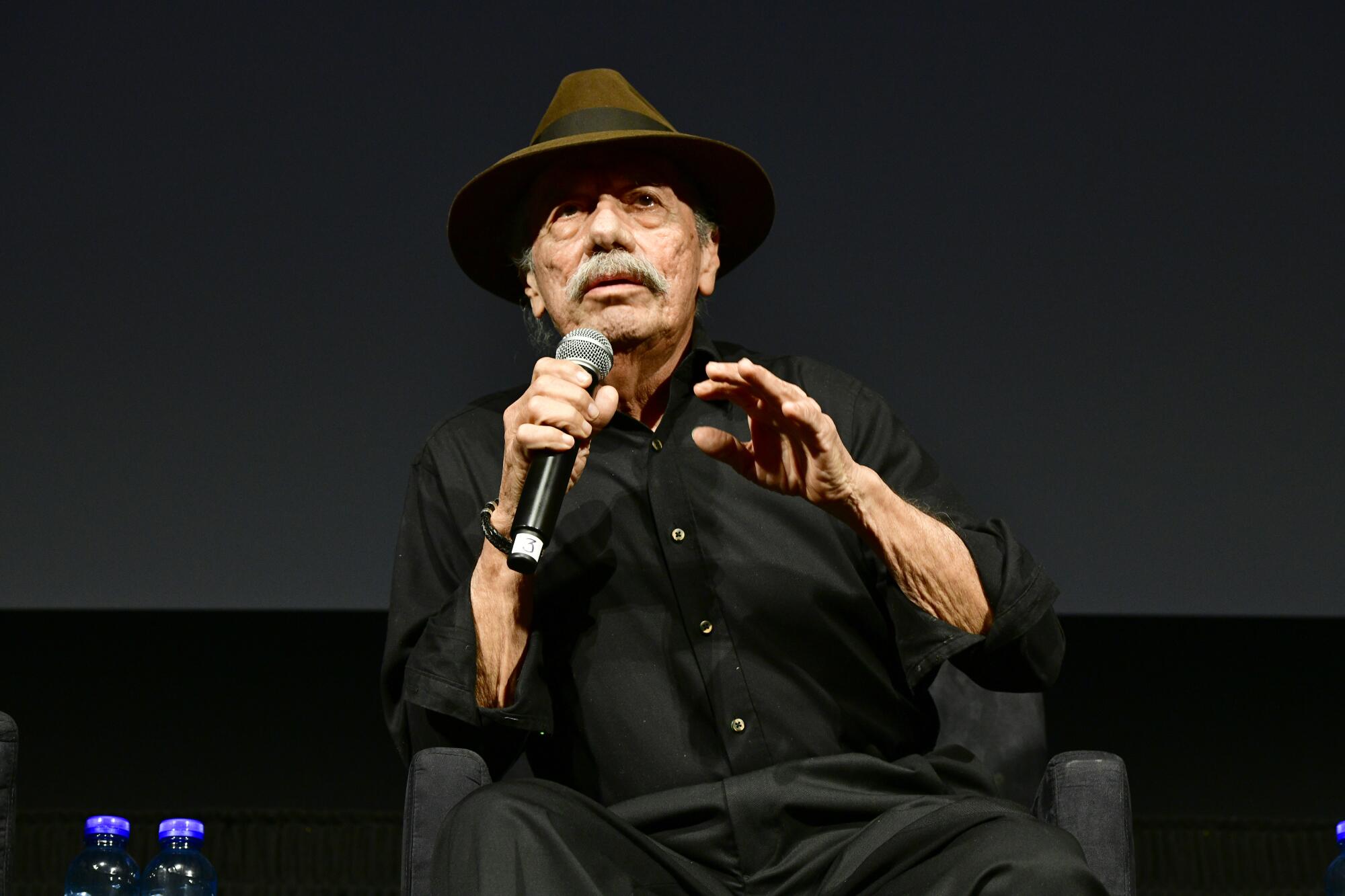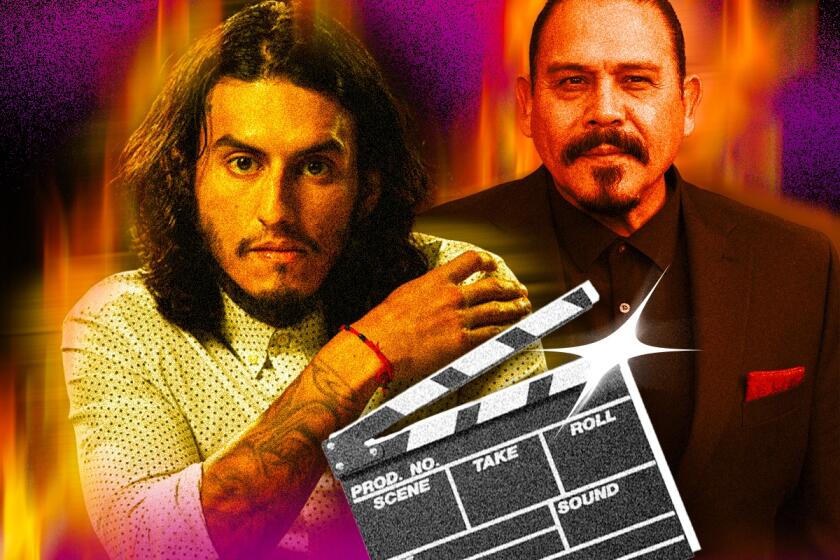
- Share via
For many Chicano families, Jaime Escalante is a household name, and mine was no different. I remember watching “Stand and Deliver” starring Edward James Olmos on VHS. The 1988 movie is about a charismatic math teacher in Los Angeles who takes it upon himself to teach his underprivileged Latino students calculus in an effort to put them on the path to a brighter future.
I recently decided to revisit the film to see if it held up, if it was different from how I remembered it, or if it had anything relevant to say about our culture, then or now. What I walked away with surprised me.
I’ll put my bias front and center here: I would never turn my back on Jaime Escalante. I don’t care how much my views have changed over the years or how jaded I’ve become. There isn’t a force on Earth that could get me to disavow “Stand and Deliver.” I will go to the tomb loving this movie. It also happens to be a piece of Latino media in the U.S. that managed to break through and permeate the pop cultural landscape more broadly. Who can forget “South Park’s” parody, Cartman lamenting, “How do I reech these keeds?”

Personally, I see it as one-third of the Holy Chicano Trinity alongside “Selena” and “Blood In Blood Out.” Was Jaime Escalante a Bolivian immigrant? Yes. Was Selena portrayed by Jennifer Lopez, famously of Puerto Rican descent? Yes. Does any of that really matter to Chicanos? No. Who cares? None of this is a science. This is our stuff, and we love our stuff! So when I sat down in my Brooklyn apartment to watch “Stand and Deliver” for free on Tubi (a far cry from watching it on VHS with my abuelos), I expected a pleasant trip down memory lane, but not much more.
Well, I suppose I also expected to find some outdated tropes or cringe-inducing moments that slipped past me as a kid. That’s how a lot of older movies are, after all. They are snapshots of their time, and language and cultural attitudes can shift overnight. And, sure, the genre of “plucky teacher saves rowdy students in the ‘hood from themselves” has been done to death, and often contains fraught politics. Many of them are what some might call “white savior” narratives, though Mr. Escalante, a.k.a. Kimo, doesn’t fall into this category.
One of my other favorites as a kid, Disney’s “Gotta Kick It Up,” a film that apparently only I have seen because no one else remembers it, however, does fall neatly under this label. It sees a white woman move into the barrio to teach a group of rambunctious Latinas how to dance so they can compete with the fancy rich schools in an intramural competition. It stars a young America Ferrera, who wants to dance despite being shamed for having the wrong body type, and has the chant of “¡sí se puede!” This, not Cesar Chavez, was how I first learned the phrase. My apologies to Dolores Huerta.
Toxic gratitude or ‘Si Dios Quiere Syndrome’ is the concept that Latinos are too content with just receiving scraps instead of demanding what they deserve.
And even as I write this, there is controversy surrounding “The Blind Side,” a 2009 film that, though not centered on a schoolteacher, follows similar genre beats. The story is about a white woman, Leigh Ann Tuohy, adopting Michael Oher, a Black kid who would go on to become an NFL star. The movie was meant to be an inspirational tale that transcended race, but recent legal battles between the Tuohy family and Oher have raised questions about the narrative presented in the film, a narrative that already had its fair share of critics.
This is all to say, I was ready to overlook some content that the kids might call “problematic.” What surprised me the most after my “Stand and Deliver” rewatch, though, was how it still works on me. Maybe I’m just under a lot of stress lately. Maybe it’s that my family is made up almost entirely of teachers themselves, including my mom, who was a freshman English teacher in our high school where we walked through metal detectors every morning, had cops in the hallways, and didn’t have enough desks or books or paper, but were famous for winning more writing and poetry contests than the rich schools in the state. Maybe it’s the nostalgia of it all.

Whatever it was, I teared up multiple times, which is not something I do very often in life. On top of that, I was pleasantly surprised at how “Stand and Deliver” dealt with issues like discrimination, lack of resources, and the complexities of family values in Latino households that can often be paradoxical in nature. There is an expectation to succeed and go far in life, yes, but there can also be a coexisting expectation to stay behind and take care of the family or work within the family business, an expectation commonly placed on women, specifically.
It also does a great job showing us people we probably recognize from our own high school days. When we get to know characters like Angel, the stereotypical cholo, and Ana, the quiet, intelligent student being forced to give up school to work at her family restaurant, we see characters with a lot of love put into them, because Latinos know that “Latino” isn’t a personality. We get the tough cholos with hearts of gold and we get the sweet nerds who are a little shy, and we root for them both. When Angel comes through at the end with a perfect score on his calculus test, it makes me want to put my fist in the air. Go off, Angel!
It was a great move, too, to make the antagonistic figures of the government testing agents so bureaucratic in nature. One is Black, and the other comes from the same barrio as the students whom they suspect of cheating because their grades were so high. Both agents vehemently deny any racial motivation for investigating the scores, claim they would do the same for any group of students, and say that, ultimately, they are just doing their jobs.
Last week, Rep. Joaquin Castro sent a list of 27 Latino films to the National Film Preservation Board for consideration for the National Film Registry.
A cornier movie, the one that probably would have been made today, would have portrayed these characters as cartoonishly evil, sneering racists who want to keep these delinquents in their place. But isn’t that overt form of racism less common than the everyday, banal kind? The kind that is meted out by unfeeling agents of bureaucracy wearing suits, the kind that’s almost faceless because it’s more of a system than an individual? And sometimes, those agents working within that system can even look like you or your cousins.
Yes, some will see Jaime Escalante’s “ganas” philosophy as more “pull yourself up by your bootstraps” rhetoric, a sister sentiment to one I covered last week in my “Si Dios Quiere Syndrome” column. But you know what? I’ve been in that school without resources, that school that’s at risk of being taken over by the government, and I’ve had to work my way into rooms where I could have a say, and it does take ganas. It does take hard work. Is it fair? No. Of course not.
But I think that’s why “Stand and Deliver” remains beloved to this day. We know it’s not fair. We know there are institutional hurdles in place. We know no one is grading us on a curve, and that no one is going to just hand us anything in life. One solution is to be better than good and greater than great, and a lot of us can probably recognize that pressure in our own lives. It feels good to see it on the screen.
When Jaime Escalante triumphantly walks out of the school and punches the air, his students having aced the exam a second time, we never see him rub the government agents’ noses in it, because they’re not really the villains. The real villain is sort of everything. All of it. It’s cathartic to see it try and fail to keep yet another group of students in its clutches.
Why playing the stereotypical Latino role as a criminal is not a problem for some Hollywood actors.
I loved rewatching this movie. I love the characters, and all the iconic quotes. “It was your ancestors, the Mayans, that first contemplated the concept of zero.” Not technically true, but I love the energy, Mr. Escalante! I love that I forgot that Mr. Escalante has hands and joins a fight within the first few minutes. I love Lou Diamond Phillips’ performance as Angel Guzman. He’s Filipino, by the way. I love the inescapable influence of the ‘80s that saturates the film, and I even love the trope of “great man cares so much that he suffers a heart attack and his nagging wife visits him by his bedside.” Cinema!
At the same time, the rewatch made me sad, because it reminded me of how precious few cultural touchstones we have. When I finished “Stand and Deliver,” the autoplay feature already had “Selena” queued up. These movies are decades old, and as treasured as they are, it feels like we haven’t been able to add to that canon in a while.
It’s not for lack of talent. Interestingly enough, I think this is in large part due to the societal factors represented in “Stand and Deliver.” We don’t get the same resources. We don’t get as many chances to fail. We have to prove again and again that we’re worthy. And I guess that’s why I’ll always have a place in my heart for this film. When they doubt you, you shut them up. And when you get your chance, you better deliver.
More to Read
The Latinx experience chronicled
Get the Latinx Files newsletter for stories that capture the multitudes within our communities.
You may occasionally receive promotional content from the Los Angeles Times.










